

Car Safety Features: What You Need to Know
Empowering you to make informed decisions when purchasing a vehicle by understanding essential car safety features
Airbags: Your First Line of Defense

How Airbags Work
Airbags rapidly inflate and deflate during a collision, providing a cushion to protect occupants from hitting hard surfaces inside the vehicle. They are designed to work in conjunction with seatbelts.

Types of Airbags
Modern cars are equipped with various types of airbags, including front, side, curtain, and knee airbags, each designed to protect specific areas of the body during different types of collisions.
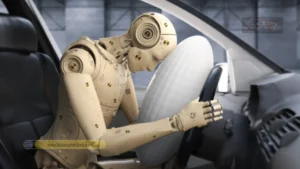
Impact
Front airbags reduce driver fatalities by 29% and passenger fatalities by 32%, according to the National Highway Traffic Safety Administration (NHTSA). Proper seatbelt use is crucial for airbag effectiveness.
Anti-lock Braking System (ABS): Maintaining Control
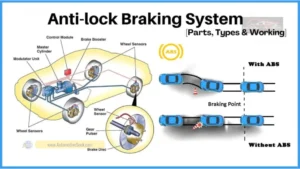
ABS Functionality
The Anti-lock Braking System (ABS) prevents wheel lockup during hard braking, allowing the driver to maintain steering control and reducing stopping distances.
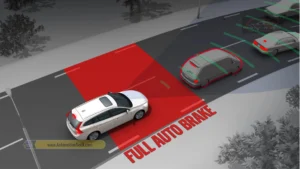
Improved Control
ABS improves steering control, enabling drivers to maneuver around obstacles while braking. This feature significantly enhances safety in emergency situations.
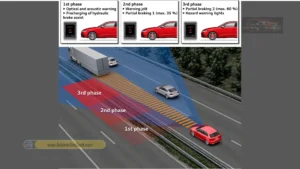
Reduced Crashes
According to the Insurance Institute for Highway Safety (IIHS), ABS can reduce car crashes by 18-20%. Maintaining adequate tire pressure is essential for optimal ABS performance.
Electronic Stability Control (ESC): Preventing Skids
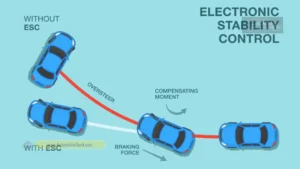
How ESC Works
Electronic Stability Control (ESC) detects and corrects skidding by applying brakes to individual wheels, helping the driver maintain control of the vehicle.

Enhanced Stability
ESC enhances stability and reduces the risk of rollovers, particularly in emergency maneuvers. This system is a crucial safety feature for all types of vehicles.

Crash Reduction
NHTSA data indicates that ESC can reduce single-vehicle crashes by up to 49%. ESC effectiveness varies based on road conditions, such as wet, icy, or gravel surfaces.
Blind Spot Monitoring (BSM): Seeing the Unseen
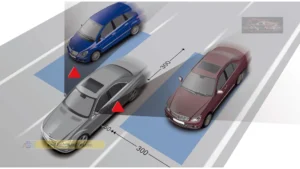
Blind Spot Monitoring (BSM) alerts drivers to vehicles in their blind spots using sensors, reducing the risk of lane change accidents.
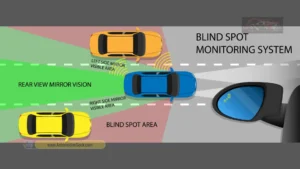
BSM is particularly useful on highways and in heavy traffic. It enhances situational awareness and helps prevent collisions during lane changes.
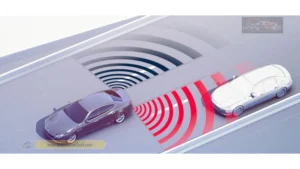
BSM can reduce lane change crashes by 14%, according to the IIHS. However, BSM may not detect motorcycles or cyclists in blind spots.
Lane Departure Warning (LDW) and Lane Keeping Assist (LKA): Staying on Track
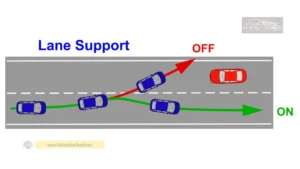
LDW Functionality
Lane Departure Warning (LDW) alerts the driver when the vehicle drifts out of its lane without signaling, providing an audible or visual warning.
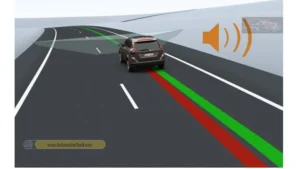
LKA Functionality
Lane Keeping Assist (LKA) gently steers the vehicle back into the lane when it detects drifting, helping the driver stay on track and prevent accidents.
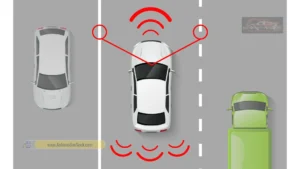
Crash Reduction Impact
LDW and LKA can reduce lane departure crashes by 5-10%, according to the NHTSA. Effectiveness depends on clear lane markings and favorable weather conditions.
Automatic Emergency Braking (AEB): Preventing Collisions

How AEB Works
Automatic Emergency Braking (AEB) automatically applies the brakes when a collision is imminent, helping to reduce the severity of the impact or avoid the collision altogether.

Collision Types Prevented
AEB is effective in reducing the risk of rear-end collisions and pedestrian accidents. It can significantly enhance safety in urban environments.

Impact of AEB Systems
The IIHS reports that AEB can reduce rear-end crashes by up to 40%. Types of AEB systems include low-speed, high-speed, and pedestrian detection.
Backup Cameras and Parking Sensors: Avoiding Obstacles
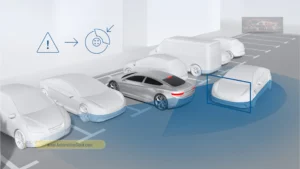
Backup Cameras
Backup cameras provide a clear view of the area behind the vehicle, helping drivers avoid obstacles and pedestrians while reversing.
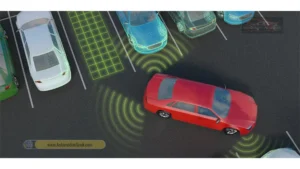
Parking Sensors
Parking sensors alert drivers to obstacles while parking, using audible or visual signals to indicate the proximity of objects.
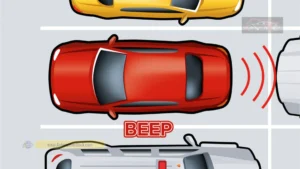
Crash Reduction Impact
NHTSA data suggests that backup cameras can reduce backup accidents by 17%. However, backup cameras may not provide a complete view of the surroundings.
The Future of Car Safety: Advanced Driver-Assistance Systems (ADAS)
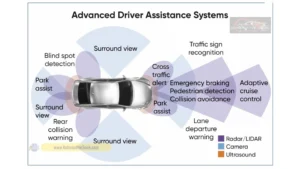
Driver Monitoring
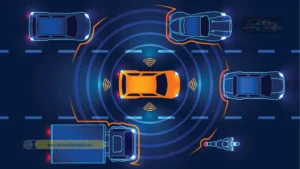
Traffic Jam Assist
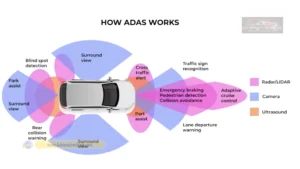
Adaptive Cruise Control
Emerging safety technologies such as adaptive cruise control, traffic jam assist, and driver monitoring systems are paving the way for safer roads. The integration of self-driving technology holds immense potential for further enhancing car safety, but ethical considerations and regulatory challenges must be addressed. ADAS combines sensors, cameras, and software to aid driving tasks, providing enhanced safety and convenience.
FAQs
• Q: Do safety features lower insurance costs?
A: Yes! Many insurers offer discounts for ADAS-equipped cars.
• Q: Can I add safety tech to older cars?
A: Some systems (e.g., dashcams, aftermarket blind-spot mirrors) are retrofittable.
• Q: What safety features are mandatory in modern cars?
A: Mandatory safety features vary by region but commonly include airbags, ABS, electronic stability control, and rear-view cameras.
• Q: How does automatic emergency braking work?
A: Automatic emergency braking uses sensors to detect obstacles and applies the brakes if the driver fails to respond in time.
• Q: Are lane-keeping systems worth the cost?
A: Lane-keeping systems enhance safety by preventing unintentional drifting, making them a valuable feature, especially for highway driving.
Conclusion
Modern safety tech isn’t just a luxury—it’s a lifesaver. Whether buying new or used, prioritize these features to guard against the unexpected.
Recap of essential car safety features: airbags, ABS, ESC, BSM, LDW/LKA, AEB, backup cameras, and parking sensors. Regular vehicle maintenance and safe driving habits are crucial for maximizing safety on the road.
Learn more about car safety from resources such as the NHTSA and IIHS. Prioritize safety when choosing a vehicle to protect yourself and your loved ones. Remember, safe driving is a shared responsibility.
Add a comment Cancel reply
You must be logged in to post a comment.
Categories
- Automotive (41)
- Car News (41)
- Car Reviews (35)
Recent Posts
About us

Sushil L D
Blog Editor
“Guiding our automotive insights, Sushil delves into the world of cars with an unwavering passion. Through the twists and turns of the industry, their words drive the engine of knowledge and enthusiasm.”
Popular Tags
#2023MitsubishiPajero
#AdventureAwaits
#AutomotiveSouk
#CadillacEscalade
#electricvehicles
#EVs
#EVtrends
#LandRoverDefender
#LimitedNightEdition
#LuxuryOnWheels AdvancedSafetyFeatures
#MitsubishiPajero2023
#OffRoadDreams
#PajeroSport2023
#PowerAndComfort
#PremiumPerformance
#RAM1500
#RuggedStyle
#SafetyFirst
#ToyotaLandCruiserTXR6X6
4x4
2023BMW740i
2023QX60
AutomotiveSouk
BlackMountainGladiator
BMWX5xDrive40i
CarMaintenance
ComfortAndConvenience
ElevateYourDrive
InfinitiQX60
JeepWrangler
JeepWranglerRubicon
JeepWranglerUnlimited
LuxurySUV
OffRoad
OilChange
PowerfulPerformance
PremiumDrivingExperience
QX60Luxury
RubiconV6
StylishAndSafe
suv
SyntheticOil
UnleashTheBeast
VermillionEdition
WranglerRubicon
Related posts

May 14, 2025
Visualize yourself driving along a busy road when your car suddenly falters and dies. You’re stuck, missing a...

2025 RAM 1500 Limited Night 3.0L: Power, Luxury, and Style Redefined
Sushil
April 21, 2025
Image Courtesy of Ram Trucks The 2025 RAM 1500 Limited Night 3.0L is a game-changer in the full-size...

The Impact of Autonomous Vehicles on the Industry: A Global Perspective
Sushil
February 24, 2025
How Self-Driving Cars Are Reshaping Transportation Worldwide Introduction Imagine a world where traffic jams vanish, delivery trucks drive...

DIY Car Hacks to Save Time & Money
Sushil
February 15, 2025
Table of Contents Keep Your Car Running Smoothly Without Breaking the Bank Introduction Let’s face it: car repairs...







